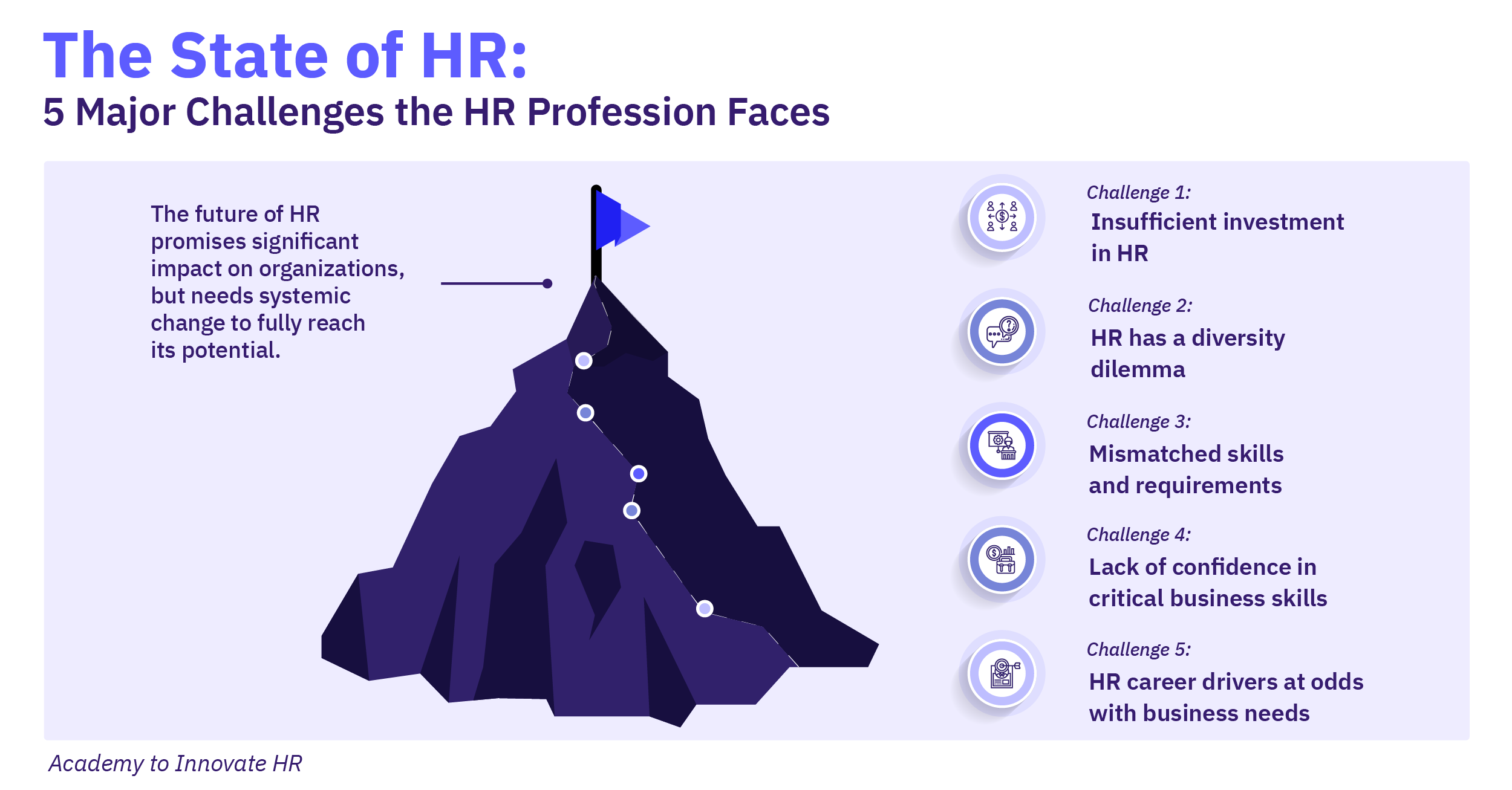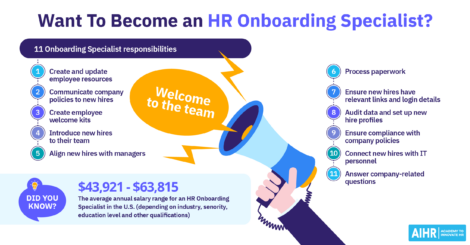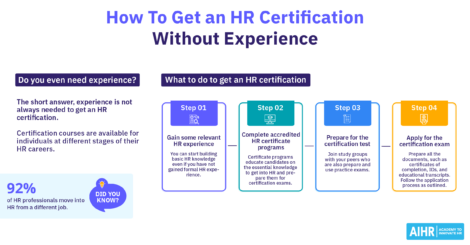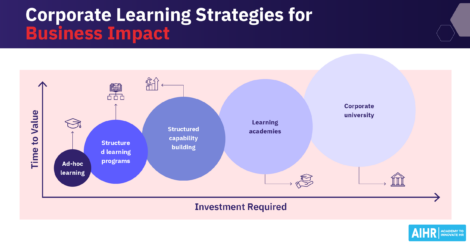HRBP Soft Skills: How To Successfully Influence Stakeholders
John Hancock once said, “The greatest ability in business is to get along with others and to influence their actions”. These words hold true for the skills required as an HR Business Partner (HRBP). Influence is a powerful force that shapes opinions, inspires actions, and drives change.

The ability to influence empowers strategic HR business partners to align HR strategies with organizational goals, drive change, and foster a positive workplace culture. Our T-Shaped HR Competency Model emphasizes the importance of influencing others as a critical interpersonal skill for HR professionals to succeed. It’s also a skill that can be learned.
In this article, we will explain why influence is important. We will also unpack the sources of influence and discuss how you can develop influence skills to build your credibility across the organization.
Contents
Why influence is crucial for HR business partners (HRBPs)
How to establish credibility with influence
1. Personal motivation: Make the undesirable desirable
2. Personal ability: Equip the right skills to build confidence
3. Social motivation: Leverage peer influence
4. Social ability: Use social structures for support
5. Structural motivation: Rewarding change
4 tips on using the sources of influence
Why influence is crucial for HR business partners (HRBPs)
Often, HR isn’t in a position of power and relies on its ability to influence stakeholders to manage the People agenda and priorities. This is why influence is a critical behavior for HRBPs to master.
Influence:
- Enables you to guide stakeholder decision-making and set the strategic agenda with the business
- Is critical in an HRBP’s toolbox for bringing about organizational change
- Helps you gain support from different levels across the organization and secure essential resources, such as HR budget and technology, for impactful HR initiatives
- Helps you champion policies that improve employee experience and create a positive workplace environment.
Lack of influence
However, a lack of influence can create many challenges for HRBPs.
- You may struggle to gain support from senior leadership, leading to unsuccessful change initiatives, low adoption rates, and doubts about HR’s effectiveness
- It can impede efforts to enhance the employee experience, promote Diversity, Equity, and Inclusion (DEIB), improve working conditions, and boost engagement
Balancing different stakeholders’ diverse and sometimes conflicting interests can make it difficult for HRBPs to build influence. Based on findings from our HRBP Impact Assessment, 38% of HR Business Partners struggle to identify actions when faced with conflicting priorities.
Building influence isn’t about using power but about earning trust, showing expertise, and communicating the value of HR initiatives. Using different strategies and understanding where influence comes from can help you position yourself as a strategic partner who drives essential organizational changes.
Take the HRBP Impact Assessment
Diagnose the quality of your HRBP model implementation with AIHR’s T-Shaped HR Competency Model Assessment. Get results and recommendations on how strategically aligned your HRBP model really is.
How to establish credibility with influence
Understanding and using different sources of influence is crucial for driving behavior change. Researchers Joseph Grenny, David Maxfield, and Andrew Shimberg identified six critical sources of influence in this process.
Sources of influence:
- Personal motivation
- Personal ability
- Social motivation
- Social ability
- Structural motivation
- Structural ability
In the context of the HRBP role, we will focus on the first five sources of influence and explain how you can use them to gain influence and build credibility.
1. Personal motivation: Make the undesirable desirable
The first source of motivation involves creating an internal desire for change in individuals. This means connecting the changes or initiatives with the core values and personal goals of others, making them see the direct benefits and relevance to their own lives.
How HRBPs can use personal motivation:
- Understand what’s important to your stakeholders and what they care about most: It’s essential to connect with the individuals’ personal values and priorities and show them how proposed initiatives align with or contribute to them.
- Recognize that change can be challenging and uncomfortable: Addressing this from the beginning can alleviate concerns and minimize resistance.
- Connect the change to the broader mission and organizational goals: This helps stakeholders see the bigger picture and how the changes will contribute to organizational success.
Personal motivation in action:
Maria, an HRBP at a mid-sized manufacturing company, has been tasked with implementing a new Diversity, Equity, and Inclusion (DEI) initiative to foster a more inclusive workplace and improve employee satisfaction. But she knows that the success of this initiative hinges on gaining the full support and active participation of the leadership team.
Maria successfully secures buy-in and active participation from senior leadership by understanding their values and motivators through one-on-one meetings. She develops personalized engagement plans to highlight how the DEI initiative aligns with different goals, such as social responsibility for the CEO and innovation for the CTO.
To make it relatable, she uses success stories of how such initiatives contributed to similar goals at other organizations. By continuously connecting the changes back to the broader mission and objectives of the organization, Maria helps stakeholders see the bigger picture and how the DEI initiative contributes to organizational success.
Because of this, the leaders actively champion the DEI initiative, leading to increased participation, improved employee satisfaction, and a more robust organizational culture focused on diversity and inclusion.
2. Personal ability: Equip the right skills to build confidence
HRBPs can develop personal abilities to help stakeholders feel confident and take ownership. This reduces resistance to change and increases the likelihood of successful implementation.
For example, HRBPs can build influence by providing employees, managers and senior leadership with the right tools, training, and practice opportunities.
How HRBPs can use personal ability:
- Take an incremental approach: Progressively build on previous knowledge to enhance stakeholders’ individual abilities. This will also prevent them from feeling overwhelmed, reinforce learning, and help them to retain skills over time.
- Mirror real-life situations: Ensure that the learning experiences closely mirror real-life situations where the changes will be implemented, including potential challenges. Help them to practice as frequently as possible with activities like role-plays or interactive workshops. These will help them to receive immediate feedback and identify any challenges in the application.
- Enable autonomy and empowerment: Encourage stakeholders to take the initiative and make decisions to increase their sense of ownership and internal motivation.
Personal ability in action:
Maria conducts specialized training sessions tailored to senior leaders, covering DEI fundamentals and specific leadership actions.
She provides ongoing support through regular check-ins and advanced training, reinforcing learning and addressing challenges. She organizes role-playing exercises where leaders practice DEI concepts, such as conducting inclusive meetings.
By leveraging leaders’ existing team-building skills and providing accessible resources like DEI toolkits and executive briefings, Maria empowers them to champion the initiative confidently.
3. Social motivation: Leverage peer influence
When important individuals and groups start using and supporting these new behaviors, others are likelier to do the same. This approach helps changes to be accepted more quickly and by more people, and it also creates a supportive community around new initiatives, making them more likely to last.
How HRBPs can use social motivation:
- Identify opinion leaders within the organization: These could be formal leaders, like managers and executives, or informal leaders, such as long-tenured employees or those with strong social connections.
- Engage opinion leaders during the design and planning stages: This will help them feel committed to the initiative’s success and establish role models who support it based on their positive experiences.
- Identify stakeholders most likely to raise concerns: By identifying these from the start, you can address their concerns upfront and turn potential resistance into support, making them advocates for the change.
Social motivation in action
Maria identifies critical influencers within the leadership team and engages them early, involving them in planning and securing their commitment. She ensures leaders are visible participants in the initiative by appointing DEI ambassadors within the leadership team.
She organizes events where they share their experiences and successes. This collective endorsement and visible commitment from the leadership team create a ripple effect, motivating the entire organization to embrace and support the DEI initiative.
4. Social ability: Use social structures for support
Leveraging social ability as a source of influence is a powerful strategy to foster collective ownership and support for initiatives. When stakeholders feel connected and supported by their peers, they are more likely to embrace and lead changes.
How HRBPs can use social ability:
- Establish formal and informal networks connecting stakeholders: These could include councils, cross-functional committees, and other networking events that encourage open dialogue and relationship-building.
- Create collaborative learning opportunities: These could include workshops, strategy sessions, and knowledge-sharing forums. Through interaction, discussion, and collective problem-solving, stakeholders can learn from each other and see the value of collective support.
- Create safe ways for stakeholders to seek help without embarrassment: This could include peer coaching programs and confidential discussion groups.
Social ability in action:
Maria develops peer support systems, including confidential discussion groups and peer coaching programs, enabling leaders to share experiences and provide mutual support.
She also organizes leadership forums and panels where leaders discuss their challenges and successes with DEI, reinforcing collective ownership.
By incorporating these strategies, Maria fosters a connected and supportive leadership team that champions the DEI initiative, setting a strong example for the entire organization.
5. Structural motivation: Rewarding change
Structural motivation leverages tangible incentives and clear consequences to drive behavior change.
People are more likely to adopt and maintain new behaviors if they see that their efforts are recognized and rewarded. On the other hand, clear expectations and consequences for not meeting standards help reinforce the importance of the desired behaviors.
How HRBPs can use structured motivation:
- Ensure rewards are tangible, meaningful, and directly linked to the desired behaviors: Different people value different rewards. Some might prefer financial incentives, while others might value public recognition or opportunities for professional development. The important thing is that these rewards should be something stakeholders can see or experience and care about.
- Take a balanced approach: Focus on positive reinforcement and create clear expectations for non-compliance.
- Promote accountability and support rather than punishment: This will help people stay motivated and committed to changing their daily routines.
- Implement clear and fair criteria for rewards and consequences: This will help everyone understand how their actions align with the desired behaviors, promote fairness, and motivate people to meet the set standards.
Structural motivation in action
Maria starts by designing tailored rewards, such as performance-based bonuses, public recognition, and executive training opportunities, that are linked directly to their active support of DEI programs.
She implements accountability measures, including performance reviews and feedback sessions, to maintain consistency and fairness. Maria also regularly gathers feedback from leaders to adjust the reward systems, keeping them relevant and motivating.
4 tips on using the sources of influence
When we look at the five sources of influence relevant to the HRBP role, it’s clear that to drive the changes and behaviors we want, having and using influence is not just about persuading others to follow orders. Here are some tips on how to effectively leverage different sources of influence for HRBPs:
- Tip 1. Use diverse sources of influence: Drive the desired changes and behaviors by leveraging personal, social, and structural influences.
- Tip 2. Don’t use all sources simultaneously: Implementing strategies aimed at all the different levels at once can lead to confusion, overwhelm, resistance, and strained resources.
- Tip 3. Plan and execute carefully: Each strategy needs careful planning, execution, and monitoring to work effectively.
- Tip 4. Prioritize and sequence strategies: Rather, focus on one or two at a time to ensure effective implementation and allow employees to adjust gradually to changes.
To sum up
Using these influence strategies effectively, you can motivate and engage stakeholders at all levels, gain support for HR initiatives, and promote a culture of continuous improvement and innovation.
This influence transforms resistance into readiness and ensures that your HR efforts lead to ongoing organizational success. As HR’s role continues to expand, the ability to influence will remain a key aspect of effective HR leadership, allowing HRBPs to navigate complexities and shape the future of work.
Weekly update
Stay up-to-date with the latest news, trends, and resources in HR
Learn more
Related articles
Are you ready for the future of HR?
Learn modern and relevant HR skills, online













